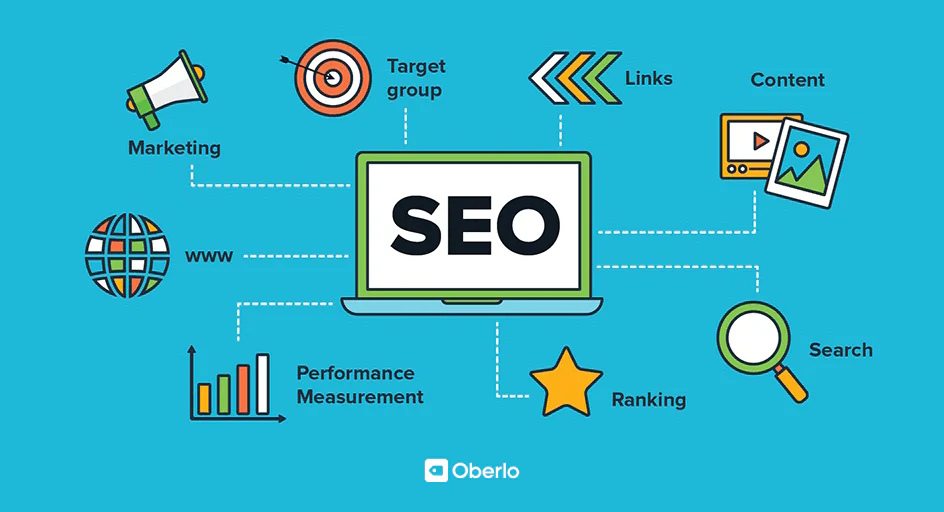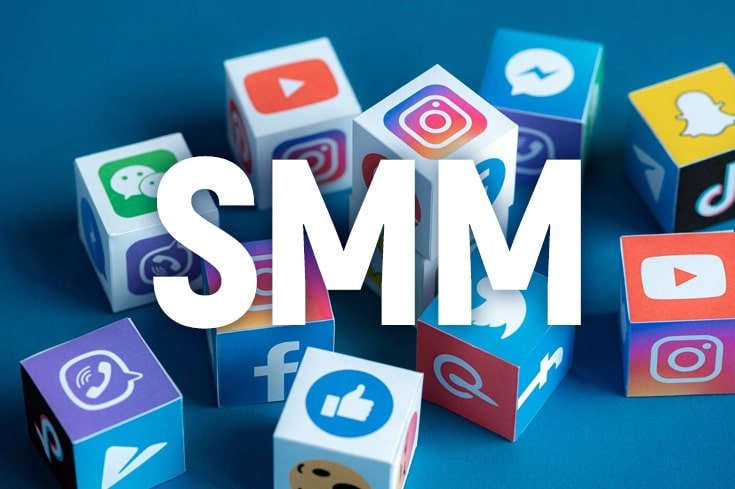what are the factors affecting digital marketing?
Digital marketing success hinges on several key factors that impact a brand’s online visibility, audience engagement, and overall performance. These factors encompass target audience behavior, search engine algorithms, content quality, social media trends, and technological advancements. By comprehending and optimizing these elements, businesses can devise effective strategies to remain ahead in the competitive digital landscape.
1. Search Engine Optimization (SEO)
Search Engine Optimization (SEO) is a long-term strategy aimed at optimizing your website or content to rank higher on search engine results pages (SERPs) for relevant keywords. The primary objective is to attract organic (non-paid) traffic to your website. SEO requires continuous effort and adaptability to changes in search engine algorithms.

- On-page SEO: Optimizing your website’s content with relevant keywords, proper meta descriptions, alt text for images, and high-quality internal linking.
- Off-page SEO: Building backlinks from authoritative websites, social media signals, and influencer collaborations.
- Technical SEO: Ensuring your website loads quickly, is mobile-friendly, has a clean URL structure, and is easily navigable for both users and search engines.
- Moz: The SEO tool company ranks highly for the term “SEO tools” due to its combination of on-page optimization, high-quality content, and authoritative backlinks.
- TripAdvisor: By optimizing local SEO for keywords like “best restaurants in [location]” and providing user reviews, TripAdvisor ranks well in search results for travel-related queries.
- The Home Depot: Focuses on local SEO to ensure they appear in searches like “home improvement stores near me,” driving local traffic to their brick-and-mortar stores.
- Cost-effective: Organic traffic is free, eliminating the need to pay for ads.
- Trust-building: Users trust organic search results more than paid ads.
- Integration with other strategies:
- Content Marketing: SEO heavily relies on high-quality, optimized content to rank well.
- PPC: SEO and PPC often work together, with SEO providing long-term growth and PPC offering immediate visibility.
2. Pay-Per-Click Advertising (PPC)
Paid advertising, or PPC, is a model in which advertisers pay a fee each time their ad is clicked. These ads can appear at the top or bottom of search engine results pages, on social media platforms, or on other websites. PPC advertising allows businesses to precisely target specific users based on demographics, behavior, and location.
Key strategies in PPC advertising include keyword bidding, retargeting, and ad copy optimization. Keyword bidding consists of bidding on specific keywords that potential customers are actively searching for. Retargeting involves displaying ads to users who have previously engaged with your website, encouraging them to return and complete a purchase. Ad copy optimization focuses on writing compelling and persuasive ad copy that attracts clicks and leads.
For example, many e-commerce stores utilize Google Ads to bid on high-conversion keywords such as “buy laptops online” or “best smartphones.” Airbnb employs PPC ads to target individuals searching for vacation rentals in specific locations, bidding on terms like “beachfront vacation rentals” or “luxury Airbnb.” Tesla also uses PPC advertising to reach potential customers interested in electric vehicles and related terms such as “best electric cars” or “affordable electric cars.”

One of the advantages of PPC advertising is the ability to achieve immediate results. Unlike SEO, which requires time to generate organic traffic, PPC ads can drive traffic instantly. Additionally, PPC advertising enables businesses to target specific groups based on their interests, location, and behavior, providing a highly focused approach to marketing.
PPC advertising can also be integrated with other marketing strategies, such as SEO and conversion rate optimization (CRO). While SEO generates organic results, PPC can help capture immediate attention for high-demand keywords. A well-designed landing page can further enhance conversions from PPC traffic.
3. Social Media Marketing (SMM)
Social Media Marketing: Leveraging Platforms for Audience Engagement and Brand Growth[6\]
Social Media Marketing is a strategic approach that involves utilizing platforms like Facebook, Instagram, Twitter, and LinkedIn to connect with your target audience, enhance brand visibility, and drive traffic to your website or e-commerce store. By engaging with customers on a direct and authentic level, businesses can build a loyal following and foster meaningful relationships.
1. Organic Content Creation: Posting valuable and engaging content, such as photos, videos, polls, and stories, helps build a substantial following and establish your brand as an authority in your niche.
2. Paid Social Advertising: Running targeted paid campaigns allows businesses to reach specific demographics, behaviors, and interests, increasing the likelihood of conversions and engagement.
3. Influencer Collaborations: Partnering with social media influencers who align with your brand values and have a substantial following can help promote your products or services in an authentic and trustworthy manner.

Examples of Successful Social Media Marketing Strategies:
Nike: Nike’s Instagram account exemplifies effective social media marketing. They consistently share motivational content, new product launches, and collaborations with renowned athletes, resonating with their target audience and building a strong brand presence.
Glossier:Glossier, a beauty brand, has achieved remarkable success through organic social media marketing. They leverage user-generated content and collaborate with influencers to promote their products, fostering a sense of community and loyalty among their customers.
Spotify: Spotify effectively engages users on Instagram Stories and Twitter by providing personalized music recommendations based on their listening history. This personalized approach enhances user experience and encourages repeat engagement.
Benefits of Social Media Marketing:
- Engagement:Social media offers a direct avenue for businesses to communicate with their customers, fostering relationships and loyalty.
- Wide Reach: With billions of active users worldwide across various platforms, social media provides businesses with a vast reach to expand their brand awareness and connect with potential customers.
- Connection with Other Marketing Strategies: Social media serves as a crucial platform for distributing and promoting content, whether it’s blog posts, videos, or infographics. Additionally, social signals (likes, shares, comments) can indirectly influence search engine rankings, enhancing the overall effectiveness of content marketing strategies.
4. Content Marketing
Content marketing involves creating and distributing valuable, relevant content to attract and retain a target audience. This content can take various forms, such as blogs, eBooks, videos, podcasts, and infographics, which provide useful information while subtly promoting your brand.
Key strategies in content marketing include:
-Blogging involves writing informative and engaging blog posts centered around target keywords to attract traffic and provide value to users. Video marketing entails creating educational or entertaining video content for platforms like YouTube and social media to engage the audience. Lead magnets involve offering downloadable resources (eBooks, templates, checklists) in exchange for users’ contact information to capture leads.

Examples of successful content marketing campaigns include:
HubSpot: HubSpot’s blog and eBooks on inbound marketing, sales, and CRM systems not only drive traffic to their websites but also establish them as industry experts. For instance, Coca-Cola’s “Share a Coke” campaign, which personalized Coke bottles, generated a viral social media buzz. Similarly, Red Bull positions itself as a brand for adventure and thrill-seekers through content marketing, including videos and extreme sports events.
Benefits of content marketing include:
- Brand Authority: Regularly publishing valuable content helps establish your brand as an industry leader.
- Organic Traffic: Optimized content can rank in search engines, driving ongoing traffic to your website.
- Connection with Other Marketing Channels: Content is essential for ranking on search engines, and blog posts and other content can be optimized for target keywords. Additionally, content like eBooks and guides can be used in email campaigns to nurture leads.
5. Email Marketing
Email marketing is a cost-effective way to communicate directly with customers, promoting products, building relationships, and generating sales. It involves sending targeted and personalized emails to an audience.
To achieve this, email marketers can segment their email lists based on behavior, location, or purchase history to send relevant messages. Automation can further enhance email marketing by setting up automatic email workflows, such as welcome emails or cart abandonment reminders, based on customer actions.
A/B testing is another crucial aspect of email marketing, allowing marketers to test different email subject lines, calls-to-action, and designs to optimize open rates and click-through rates.
Amazon, BuzzFeed, and Shopify are all companies that use email marketing to engage with their customers. Amazon’s email campaigns are highly personalized, offering product recommendations based on a customer’s past purchases. BuzzFeed’s email newsletters feature engaging content such as quizzes, articles, and product recommendations, which drive traffic to their website. Shopify sends targeted emails to e-commerce store owners, providing them with helpful tips and features to enhance their stores.
Direct Communication: Emails are delivered directly to the inbox, providing businesses with a direct means of communication with potential customers.
High ROI: Email marketing stands out as one of the most effective marketing strategies, offering a high return on investment compared to other approaches.

Enhancing Connections:
Content Marketing: Email serves as an excellent platform for sharing blog posts, videos, or exclusive offers with your audience.
PPC: Paid ads can effectively attract users to sign up for email lists, allowing for nurturing and building relationships over time.
6. Affiliate Marketing
Affiliate marketing is a performance-based marketing strategy where businesses reward affiliates for generating traffic or sales through their marketing efforts. Affiliates can be bloggers, influencers, or other content creators who promote your brand.
To implement affiliate marketing effectively, businesses should focus on the following key steps:
1. Partner Recruitment: Identify and partner with affiliates who have a substantial following in your niche. This ensures that your brand reaches a targeted audience.
2. Affiliate Networks: Join affiliate networks (such as Commission Junction or ShareASale) to connect with potential affiliates. These networks provide a platform for businesses to find and collaborate with affiliates.
3. Performance Tracking: Monitor affiliate sales and provide commissions based on their performance. This ensures that affiliates are incentivized to drive results and that businesses can track the success of their affiliate marketing efforts.

Amazon Associates, Bluehost, and Shopify are all companies that offer affiliate programs. These programs allow individuals to promote their products or services and earn commissions on sales made through their unique links. For instance, Amazon Associates enables anyone to promote Amazon products and earn commissions on sales generated through their links. Similarly, Bluehost offers affiliates commissions for recommending their web hosting services. Marketers often use content marketing and YouTube videos to effectively promote the brand. Lastly, Shopify also operates an affiliate program where affiliates earn commissions by referring new users who sign up for the platform.
Influencer marketing and content marketing are two ways affiliates connect with other types of content creators. Influencers often participate in affiliate programs to promote products and earn commissions. Content marketers, on the other hand, frequently use content marketing (such as blogs and videos) to promote affiliate products.
7. Influencer Marketing
Influencer marketing is a strategy that involves collaborating with social media influencers to promote products. By leveraging their established trust and loyal following, influencers can endorse products, leading to increased conversions.
Key strategies in influencer marketing include:
1. Identifying Influencers:Choosing influencers whose values align with your brand and whose audience matches your target market.
2. Campaign Collaboration: Working with influencers on content creation, such as sponsored posts, unboxing videos, or product reviews.
3. Performance Tracking: Measuring the success of influencer campaigns by monitoring engagement, traffic, and sales.

Daniel Wellington, Fashion Nova, and Gymshark are three brands that have successfully leveraged influencer marketing to promote their products. Daniel Wellington collaborated with influencers to promote its timepieces through discount codes and sponsored posts, generating significant brand awareness. Fashion Nova, on the other hand, partnered with celebrities and micro-influencers on Instagram to promote its clothing lines, resulting in a massive increase in brand visibility. Gymshark, in its efforts to promote its apparel, collaborated with fitness influencers, driving sales and enhancing its brand’s visibility.
Benefits:
- Trust and Authenticity: Influencers have established trust with their audience, making their endorsements highly impactful.
- Targeted Exposure: Influencers can reach niche audiences that are challenging to access through conventional advertising methods.
Connection with Other Types:
- Social Media Marketing: Influencers frequently promote products on social media, seamlessly integrating them into your social media marketing strategy.
- Content Marketing: Influencers create content centered around your product, which can be repurposed for other channels.
8. Video Marketing
Video marketing is a powerful tool that leverages video content to promote products, educate customers, and entertain audiences. Videos can be effectively shared on various platforms such as social media, YouTube, landing pages, and email campaigns to capture attention and boost engagement.
Key strategies in video marketing include:
- Tutorials and How-to Videos: Creating instructional videos that demonstrate how your product functions or addresses a customer’s problem. These videos provide valuable information and help potential customers understand the benefits of your product.
- Brand Stories: Sharing the story of your brand through behind-the-scenes footage, customer testimonials, or company culture videos. This approach allows customers to connect with your brand on a deeper level and build trust.
- Live Streams: Hosting live Q&A sessions, product launches, or events to engage with your audience in real time. Live streams create a sense of immediacy and allow customers to interact with your brand and its representatives.

Examples:
- GoPro: They showcase their cameras in extreme conditions using customer-generated content and YouTube videos, appealing to adventure enthusiasts.
- Dollar Shave Club: Their viral launch video was both humorous and informative, helping the company grow quickly.
- Apple: They frequently use sleek and minimalist videos to promote new products, generating excitement and anticipation for launches.
Benefits:
- Engagement: Videos capture attention better than text or images alone, leading to higher engagement and conversion rates.
- SEO Benefits: Video content can be indexed by search engines, driving traffic and improving rankings.
- Connection with Other Types:
- Content Marketing: Videos are an excellent form of content that can be used for educational or promotional purposes.
- Social Media Marketing: Video content is highly shareable on platforms like Instagram, TikTok, and YouTube.
People also ask For
Q: What’s the distinction between on-page and off-page SEO?
On-page SEO involves strategies applied directly to the website, such as optimizing content, using appropriate meta tags, and ensuring a clean URL structure. On the other hand, off-page SEO refers to actions taken outside the website to enhance its authority, including building backlinks and engaging with social media platforms.
Q: How can I enhance the return on investment (ROI) of my PPC campaigns?
To improve the ROI of your PPC campaigns, consider the following strategies:
- Optimize Ad Copy: Create compelling and relevant ads that attract more clicks.
- Use Negative Keywords: Avoid wasting ad spend on irrelevant keywords.
- Targeting: Refine your targeting based on demographics, location, and behavior.
- Landing Page Optimization: Ensure your landing page is relevant and user-friendly to increase conversions.
Q: Which social media platforms are most effective for businesses?
Here are some popular social media platforms and their suitability for businesses:
- Instagram: Ideal for visual products and services, particularly in the fashion, beauty, and lifestyle industries.
- LinkedIn: Best suited for B2B businesses, professional networking, and thought leadership.
- Facebook: Great for reaching a broad audience and running targeted ads.
- Twitter: Useful for real-time engagement, news sharing, and trending topics.
Q: How can I create content that fosters engagement?
To create content that keeps your audience engaged, consider the following tips:
- Understand Your Audience: Tailor your content to meet the needs and interests of your target audience.
- Incorporate Visuals: Use images, infographics, and videos to make your content more engaging.
- Provide Value: Offer actionable insights, solutions to common problems, or entertaining content.
- Maintain Consistency: Regularly publish content to keep your audience engaged over time.
Q: How frequently should I send marketing emails to my subscriber list?
A common practice for most businesses is to send marketing emails weekly or bi-weekly to keep subscribers engaged without overwhelming them. However, you can also segment your list and send emails more frequently to highly engaged users while reducing the frequency for others.
Test and Optimize: Monitor open and unsubscribe rates to determine the optimal balance for your audience.
Q: How can I select the most suitable affiliates for my business?
- Audience Match: Ensure that their audience aligns with your target demographic.
- Reputation: Partner with affiliates who have a positive reputation and authority in your industry.
- Content Quality: Choose affiliates who create high-quality and engaging content.
- Tracking and Performance: Evaluate past performance metrics, such as conversion rates and sales, to assess their effectiveness.
Q: How can I measure the success of an influencer marketing campaign?
- Engagement Metrics: Track likes, comments, shares, and video views to gauge audience interaction.
- Sales and Conversions: Use unique promo codes or affiliate links to monitor sales generated from the campaign.
- Traffic: Analyze website traffic driven by influencer posts.
- Brand Sentiment: Monitor mentions and feedback on social media to assess brand perception.
Q: What type of video content is most effective for marketing?
- Product Demos: Showcase how your product functions and addresses customer problems.
- Explainer Videos: Break down complex topics or processes in an easy-to-understand format.
- Customer Testimonials: Highlight real users sharing their positive experiences with your brand.
- Behind-the-Scenes: Offer a glimpse into your business operations or team culture.
“How to Master SEO, Email Marketing, and Social Media for Business Growth”
Q: How can I create a successful social media strategy for my business?
A: To develop a successful social media strategy, identify your target audience, determine the platforms that align best with your goals, and create a content calendar that outlines the types of content you’ll share. Consistency is key, so make sure to post regularly and engage with your audience by responding to comments and messages.
Q: How can I create compelling email subject lines?
A: Compelling email subject lines are crucial for capturing attention and increasing click-through rates. They should be clear, concise, and relevant to the content of the email. Use action verbs, personalization, and a sense of urgency to make your subject lines stand out.
A: To create compelling subject lines, focus on brevity, relevance, and personalization. Incorporate urgency, curiosity, or value-driven language to capture attention. Experiment with A/B testing to identify the most effective subject lines that generate higher open rates.
Q: How can I segment my email list effectively?
A: Email list segmentation involves categorizing your email list based on various factors such as purchase history, location, engagement level, and demographics. By utilizing this information, you can send tailored messages to different segments, enhancing the relevance and engagement of your emails.
Q: What is email automation, and how can it streamline my email marketing efforts?
A: Email automation involves setting up triggers to send emails automatically based on specific actions, such as sign-ups or abandoned carts. This approach helps nurture leads and maintain customer engagement without the need for manual email sending, ultimately saving time and enhancing efficiency.
Q: How can I establish an affiliate marketing program for my business?
A: To launch an affiliate marketing program, consider partnering with an existing affiliate network or creating your own. Define commission structures, develop marketing materials for affiliates, and utilize affiliate tracking software to monitor performance. Promote your program to attract affiliates who align with your brand values.
Q: How can I effectively track and measure the performance of my affiliate program?
A: Leverage affiliate tracking software to monitor clicks, conversions, and sales. Many affiliate platforms provide comprehensive reports that offer detailed insights into individual affiliates’ performance, enabling you to adjust commissions and strategies as needed.
Q: What are the advantages of implementing affiliate marketing in my business?
A: Affiliate marketing offers several benefits, including low risk since you only pay for results (sales or leads). Additionally, it’s scalable, allowing you to collaborate with multiple affiliates to expand your reach without significantly increasing your budget.
Q: How can I identify the most suitable influencers for my brand?
A: To find the right influencers for your brand, focus on identifying individuals whose audience aligns with your target demographic. Analyze their engagement rates, the quality of their content, and their authenticity. Utilize influencer platforms or conduct manual searches on social media to discover the best fit for your brand’s image and goals.
Q: How can I assess the effectiveness of influencer marketing campaigns?
A: To measure the success of influencer campaigns, it’s crucial to track various metrics such as engagement (likes, shares, comments), website traffic, conversion rates, and sales generated through unique links or discount codes provided to the influencer’s audience.
Q: What’s the distinction between macro and micro-influencers?
A: Macro-influencers boast a substantial following, typically in the hundreds of thousands or even millions. On the other hand, micro-influencers have a smaller, more specialized following, usually comprising less than 100,000 individuals. Micro-influencers often command higher engagement rates and are more economical for brands with limited budgets.
Q: How can I create captivating YouTube videos for my brand?
A: Begin by defining your target audience and the type of content that resonates with them. Ensure that your videos are visually appealing, incorporate a clear call-to-action, and optimize them for search engines by incorporating relevant keywords in titles, descriptions, and tags.
Q: How can live streaming enhance my marketing strategy?
A: Live streaming enables real-time interaction with your audience, creating a sense of urgency and exclusivity. It’s an ideal platform for product launches, Q&A sessions, and behind-the-scenes content that fosters a stronger connection with your followers.
Q: How does video marketing contribute to search engine optimization (SEO)?
A: Video content has the potential to drive traffic to your website and improve its search engine rankings. By optimizing videos for search engines, including relevant keywords, you can increase their visibility in search results and on platforms like YouTube, which ranks second as the largest search engine.